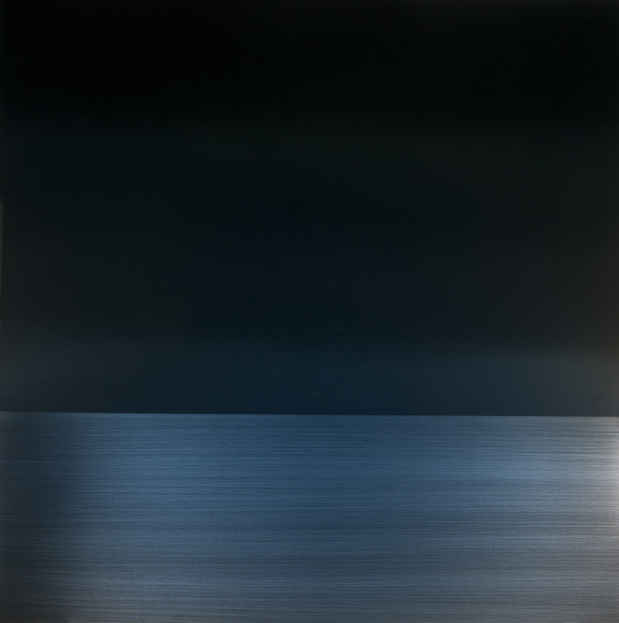Miya Ando “Kisetsu (Seasons)”
Sundaram Tagore Gallery

This event has ended.
A descendant of Bizen sword makers, Ando was raised among Buddhist priests in a temple in Okayama, Japan. Combining traditional techniques of her ancestry with modern industrial technology, she skillfully transforms sheets of metal into ephemeral, abstract paintings suffused with color.
The foundation of Ando’s practice is the transformation of surfaces. She applies heat, sandpaper, grinders, acid and patinas to metal canvases, irrevocably altering the material’s chemical properties to produce subtle, light-reflective gradations of color and texture.
As with her earlier metal paintings, her new works are luminous blue, pink, green and gold, a palette she conjures from a limited selection of industrial dyes. Ando uses different techniques to adhere the color to the aluminum panels, including anodization, in which sapphire crystals are electroplated to the metal, allowing the dyes to bond. Another approach is the layered application of pigments and urethane, which allows for variations of color and finish, with some areas of the painting matte and others glossy. To produce a high-gloss finish, Ando adds up to twenty layers of urethane and resin, which vividly amplifies the reflective quality of the metal. The resulting works subtly evoke ethereal, minimalist landscapes, cloud formations and abstracted metallic horizons.
Ando’s goal is to create a relationship between her industrial materials and the natural world. “I’m interested in elemental and material transformations, so I look to materials that can show a duality. Hard metal becomes ethereal and reflects light differently throughout the day, or becomes something that captures changing light, as in the sky,” she says. “The paintings are about finding harmony and balance between the man-made and natural.”
For the installation Koyo, Ando uses her signature visual vocabulary—subtle gradations of form and color that capture moments in time—to explore impermanence. Hundreds of cascading Bodhi leaves change from green to yellow to orange and finally brown, alluding to momiji-gari, the Japanese tradition of traveling to scenic areas to view autumn leaves. Although it’s considered a secular event, there’s a spiritual element, as viewers are reminded that all things are transitory and it’s these transformations, cyclical and otherwise, that mark time.
Ando has also introduced a new material alongside the steel and aluminum she usually works with: Shou Sugi Ban, a charred wood used as an exterior building material in her hometown of Okayama. Similar to the metals she uses, the wood, once charred, is transformed, becoming stronger and more durable. Her installation Ku (Emptiness/The Sky) Shou Sugi Ban, is a large-scale sculpture clad in this wood. The interior of the sculpture is a continuous composition across multiple panels, which surrounds the viewer, offering a quiet space for contemplation and the experience of stepping inside one of Ando’s metal paintings.
Media
Schedule
from October 16, 2014 to November 15, 2014
Opening Reception on 2014-10-16 from 18:00 to 20:00